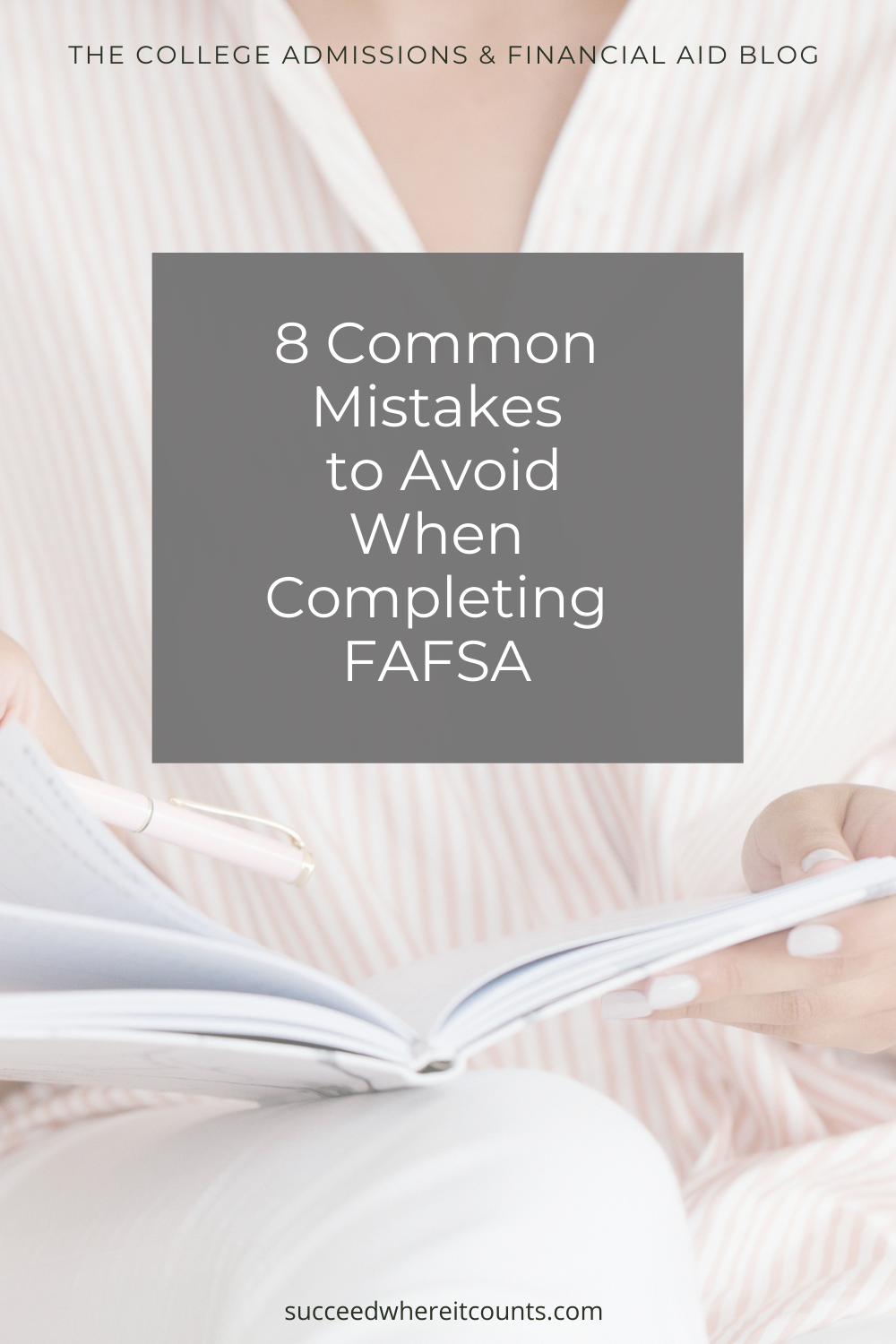family must enter. Notice the words, because in the title is the first, and most common mistake. It is a free application, it is not an application for free financial aid.
In fact, the most common form of financial aid offered through FAFSA is a loan. The U.S. Department of Education reports $1.5 trillion (put 11 zeroes after that 5) in outstanding education loans. Below are examples of other, commonly made errors in completing the form.

- We already covered the first mistake above. It is a free application, it is not an application for free financial aid.
- Year Applied for: if you go to the FAFSA website now, and begin as a new applicant, it will ask for which year you are applying: 2020-2021, or 2021-2022. Current high school seniors are applying for 2021-2022.
- Social Security Number: don't guess! Know for sure, and double check you entered each one correctly; student SS#, and parent(s). Why the parenthesis? See subsequent bullet points below. FAFSA automatically sends the social security information to Social Security Administration to verify that there is such a number, and that the number is attached to the name submitted. There is an opportunity to correct an error, but it takes time.
- Student or Parent: The person creating the new application is asked to identify as the student or a parent. It does not matter which, but remember whose information you are providing. Both the student and the parent(s) are asked identical, personal questions. For example, "Are you married? Are you a military veteran?", etc. A common mistake is for the student to assume the question asks about his/her parent(s). Check the section of the application. You will see a tab labeled STUDENT, or a tab labeled PARENT. Remember which section you are completing. Also, since the U.S. Supreme Court' ruling on same-sex marriage, the FAFSA form changed from "Father, Mother" to "Parent 1, Parent 2." Keep track of which you list as #1, and #2. It will matter later.
- Divorced or a Widow/Widower: Are you divorced from your child's other parent? Are you legally separated? Did your spouse pass away? If you have not remarried, there is only one (1) parent as far as FAFSA is concerned. The point of confusion, with so many divorces in the USA, is a student living with her mom (for example) will list mom as Parent 1, and then the divorced father as Parent 2. Don't! Not for FAFSA. Have you remarried? Keep reading.
- Remarriage: when you remarried your new husband, or new wife just signed on to help pay for the college education of all the children from your first marriage. That spouse should be listed as Parent 2. Sorry, but that's the way the rules are written.
- Tax Returns: Prior-Prior-Year was inaugurated during the Presidency of Barack Obama. That is when the first filing date was moved up from January 1 to the previous October 1. The easiest way to remember is this: You are completing FAFSA in the Fall of the Year. Which is the most recent tax return you were supposed to have filed earlier that year, by April 15? For example, you are completing FAFSA in December, 2020. Your student plans to enter college Fall Semester, 2021. The tax return FAFSA wants is 2019. (Start college 2021; tax return from prior-prior year is 2019.) FAFSA uses the Data Retrieval Tool to make it simple. Click to allow the DRT. There will be double verification requested. The appropriate tax return is uploaded, and you are returned to FAFSA.
- Login and Save Code: write down (somewhere you can find it easily) the usernames and passwords you create; and the save code, too. You will need them repeatedly, now and in future years.
One reason students don't receive all the financial aid they could is due to mistakes on their FAFSA. FAFSA with errors are returned for correction. Meanwhile, financial aid is being handed out, first-come, first-served.


 Subscribe
Subscribe
